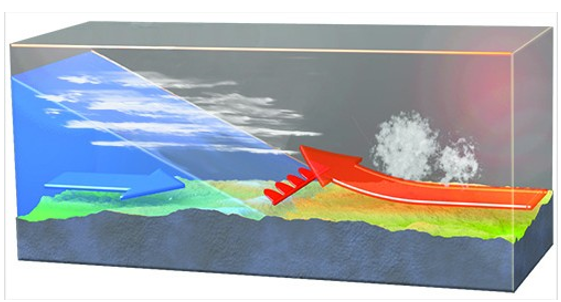Where did Saturn's rings likely come from?
A) either a moon that never formed, or a moon destroyed by tidal forces
B) the decay of radioactive particles in the outer fringes of Saturn's upper atmosphere
C) volcanic activity on its surface ejecting matter into space
D) the gravitational capture of old satellites and other space junk lost from Earth's orbit and other space missions
A
You might also like to view...
In the cross section of the front pictured here

A) stratiform clouds tend to form with precipitation being relatively short-lived.
B) stratiform clouds tend to form with precipitation being of relatively long duration.
C) cumuliform clouds tend to form with precipitation being relatively short-lived.
D) cumuliform clouds tend to form with precipitation being of relatively long duration.
New ocean basins are formed from which of these geologic features?
a. Mountain chains b. Subduction zones c. Fault lines d. Mantle plumes e. Rift valleys
What sort of instrument is used to determine the parent-daughter ratio of isotopes, and what does it
measure? What will be an ideal response?
Natural resources are ________
A) resources provided by the Earth that are rapidly depleted by human societies B) resources provided by the Earth that are renewable and inexhaustible C) nonrenewable materials provided by the Earth that are formed slowly over millions of years D) the substances and energy sources that we take from the environment E) services provided by humans to help maintain ecosystems and their vital processes